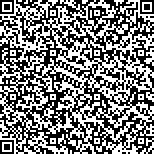下载中心
优秀审稿专家
优秀论文
相关链接
摘要

太阳光入射与地表、大气相互作用,会在天空中出现较为稳定的天空偏振模式图,即以太阳为中心,天空中的偏振信号呈现一定的规律分布。影响天空偏振模式图的强度及形态主要由地表反射性质、空气分子散射性质及气溶胶光学性质共同影响。本研究利用矢量辐射传输模型,以海洋下垫面为例,在获取沙尘非球形与煤烟非球型气溶胶单次散射性质的基础上,模拟了不同气溶胶光学厚度情况下的全天空偏振模式图。结果表明,天空以太阳入射方向为中心呈现一个较为稳定的天空偏振模式图。沙尘型散射气溶胶光学厚度的增大会减弱该模式图的强度,而煤烟型吸收气溶胶光学厚度的增大会增大该模式图的强度。利用双模态(沙尘型与煤烟型混合)气溶胶模型,系统分析不同气溶胶比例情况下的天空偏振模式图,结果表明全天空偏振模式图的基本模态依旧存在,但是其强度受气溶胶模型与光学厚度双重影响。因此在利用全天空偏振模式图进行气溶胶光学性质反演时需要注意气溶胶模态信息的选择。
This paper discusses the status of full sky polarization pattern and the major factors affecting its strength. These factors are Aerosol Optical Depth (AOD) and aerosol models (described by the single scattering properties of aerosol particles). The different results of AOD and aerosol models are demonstrated.
A relatively stable and regular sky polarization pattern is suggested to exist in the sky centering the position of the sun through the comprehensive results of incident solar light with underlying surface and atmosphere. This complex process can be described and calculated by vector radiative transfer models with the output of polarization components. The full sky polarization signals exhibit a certain regular distribution in the sky. The strength and pattern of full sky polarization are affected by the combination of surface reflective properties (including polarized reflectance and bidirectional reflectance), atmosphere molecule-scattering properties, and aerosol optical properties. This study simulated different full sky polarization patterns under various AOD conditions based on vector radiative transfer models. For example, the underlying surface is assumed to be an ocean surface. The land surface is omitted in this study because its basic pattern is similar to that of the ocean surface.
The single scattering properties of dust nonspherical and soot nonspherical aerosol particles were calculated using a TMatrix-Geo model. Phase functions and other single scattering properties were then obtained as the basic inputs of vector radiative transfer model. Results demonstrated a relatively stable sky polarization pattern centering the direction of incident solar light. However, different effects were observed between dust and soot aerosol on full sky polarization pattern. The increase in dust-scattering AOD weakens the pattern of sky polarization from a maximum degree of polarization of 50% to less than 30%. Meanwhile, an increase in soot-absorbing AOD strengthens the pattern of sky polarization from the maximum degree of polarization of 50% to >70%. With the bimodel (mixture of dust and soot aerosol) aerosol model, the sky polarization patterns were systematically analyzed with different ratios of soot-to-dust aerosols. The basic sky polarization pattern is suggested to still exist in the sky, but the strength is influenced by both aerosol model and AOD. With increased soot AOD, sky polarization tends to increase despite the total AOD being the same. When retrieving aerosol optic properties with sky polarization pattern, paying attention to the selection of aerosol model information is necessary.

